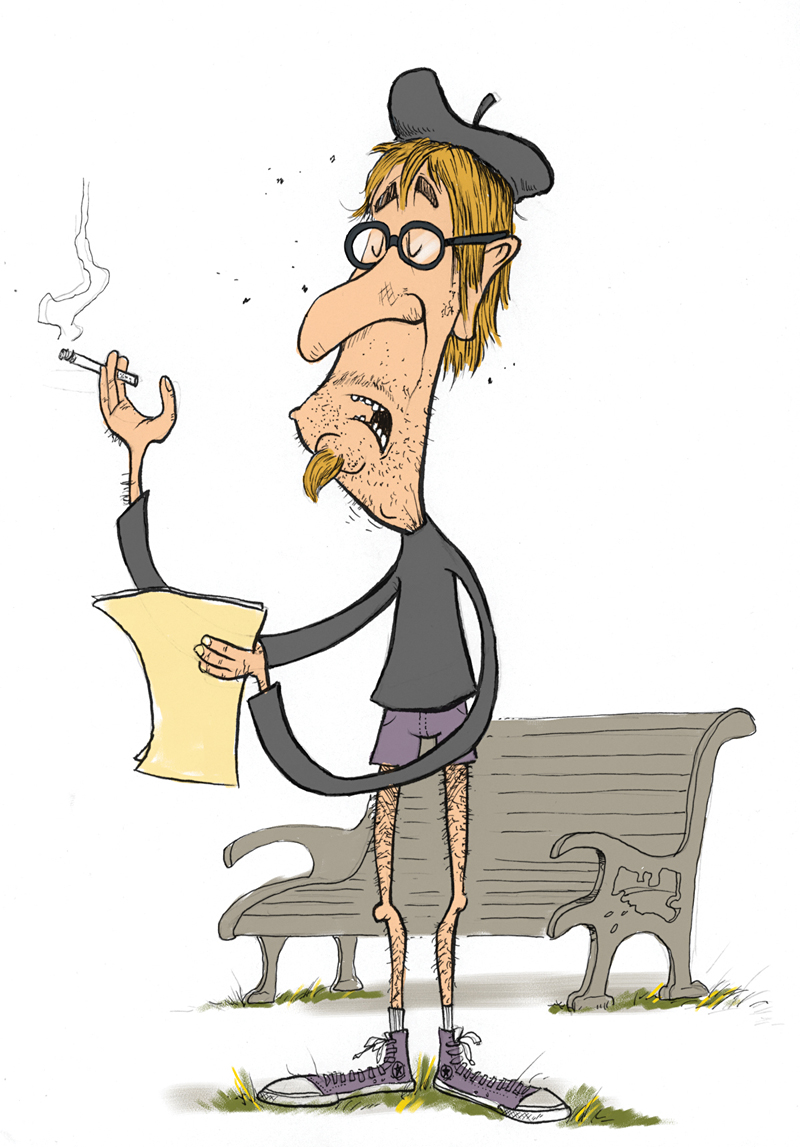Seattle readily names some of its streets for sports figures—Edgar Martinez and Dave Niehaus, to name two—but as Crosscut‘s Knute Berger has pointed out, “Seattle is a far cry from San Francisco, where streets and alleys are named for the likes of Jack Kerouac and Dashiell Hammett.”
The Emerald City merely recognizes its late resident playwright August Wilson with an honorary sign, while Hugo House is named for a poet (Richard Hugo) who never lived there. Another poet, Denise Levertov, is remembered by just a cemetery headstone. And the author of one of the most beloved books about Seattle, Skid Road, is honored by the Murray Morgan Bridge—in Tacoma.
“The real pilgrimage places are Bruce and Brandon Lee’s graves and Kurt Cobain’s Viretta Park bench,” notes Berger, an ex–Seattle Weekly editor. Where, he asks, is Theodore Roethke Historic Park, for example (as it stands, the Pulitzer-winning poet has only an alley in his name). At the least, “I’d love to see signs for streets and ways named for Emmett Watson, Octavia Butler, Mary McCarthy, Frank Herbert, Walt Crowley, Nard Jones, Betty MacDonald, Morgan, and Roethke.”
Raise a glass to that. Watson, as big a name as there ever was in Seattle journalism, was up for enshrinement as the namesake of a Queen Anne park a few years back, but didn’t make the cut. It appears his namesake Pike Market oyster bar will have to singly bear the honor, since writers and parks don’t seem to mix.
The city’s parks are titled mostly after place names (Madison, Ballard, Magnolia) and historic figures (Hutchison, Cal Anderson, Magnuson). Some are named for murder victims (civil rights leader Edwin Pratt and federal prosecutor Thomas C. Wales). Some enshrine musicians (Jimi Hendrix) and political figures (Terry Pettus) both celebrated and controversial. Although, oddly, the park websites for these last two don’t include the typical history box telling of their pasts—a musical genius who died in his own vomit and a communist jailed in the ’50s for conspiring to overthrow the government.
Clearly, there is a dearth of hallowed public grounds for Seattle’s scribes. It could be that someone has just overlooked the writing set, or thinks an honorary park for typists is a waste of green space. Much historic dust has settled, and it’s likely that a person seated in, say, Ed Guthman Meadow would ask “Who?” But as a plaque could answer, he won The Seattle Times‘ first Pulitzer, edited the Los Angeles Times, wrote We Band of Brothers, was an aide to Bobby Kennedy, and made Nixon’s enemies list—his greatest triumph, he said.
On the upside, under park rules, all namesakes must be dead, and media-haters could think of these oases as pleasant gravesites of forsaken ideas. Perhaps the honoring could be done all at once: The Writer’s Park, a historic journalism junkyard where memorable Seattle—or Northwest—journalists, editors, and authors could be remembered without spoiling more than one neighborhood. (Just tryin’ to sell the thing here.)
If so, its center should consist of two large bronzes representing the writer’s world. One would be the old arc-shaped P-I copy desk where, as a neophyte headline writer, I was amazed to see sitting about me on a daily basis Dune author Frank Herbert to my right, Another Roadside Attraction author Tom Robbins to my left, prize-winning poet and National Book Award nominee David Wagoner across the way, and in the copy dealer’s slot, Darrell Bob Houston, King of the Midnight Blue author, Esquire writer, and extraordinary headline artist (including “Oh That KKKKKKKKKKKKKKKKKK-Koufax!” when the famous pitcher struck out—K’d—18 batters).
The other bronze would of course be the bar at the Blue Moon Tavern, where from time to time you could find sitting on its stools three Pulitzer-winning poets in a row—Roethke, Carolyn Kizer, and Stanley Kunitz, and a lesser poet, John Pym, remembered for taking a flying slide off a shuffleboard table and crashing through the front window.
Into this bar scene a sculptor could work all the other journalists and authors who drank there for inspiration. Yes, quite the large statue. But what is so bad about the city gathering its lamented writers into one bronze biergarten? Not, as Robbins might say, just another roadside attraction, but a still life, with pigeons.








